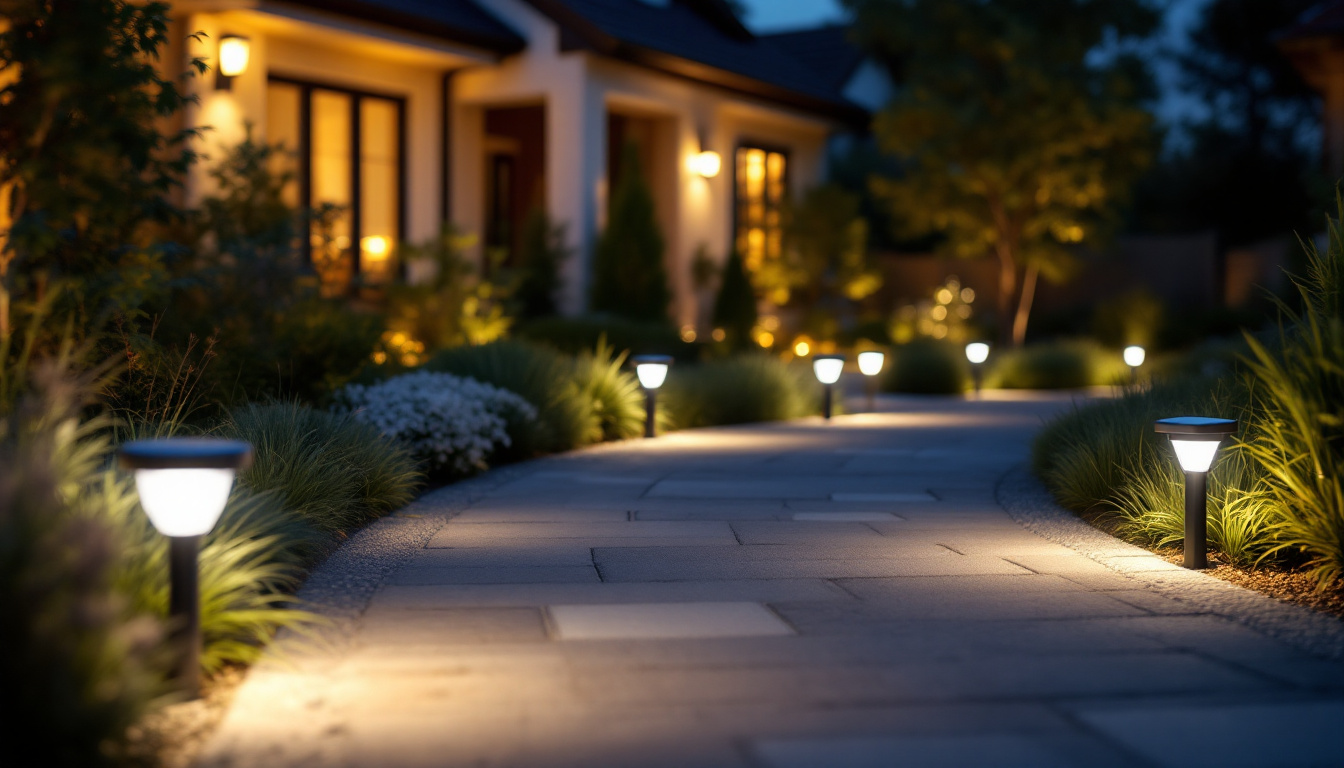
In the ever-evolving world of lighting solutions, innovation plays a crucial role in enhancing efficiency and reducing costs. One such innovation that has garnered attention is the light bulb with prongs. This unique design not only simplifies installation but also offers a range of benefits that can significantly impact the operations of lighting contractors. Understanding these advantages can help professionals in the industry make informed decisions that ultimately save time and money.
The light bulb with prongs, often referred to as a plug-in bulb, is designed with built-in prongs that allow it to be directly connected to a power source without the need for additional fixtures or wiring. This design is a departure from traditional light bulbs, which typically require a socket or fixture for installation. The pronged design streamlines the process, making it an attractive option for contractors looking to enhance their efficiency.
The pronged light bulb features a simple yet effective design that allows for quick and easy installation. By eliminating the need for complex wiring, contractors can significantly reduce the time spent on each project. This design is particularly advantageous in commercial settings where multiple fixtures need to be installed quickly and efficiently.
Moreover, the functionality of these bulbs extends beyond mere installation. Many models are designed to be energy-efficient, providing high-quality illumination while consuming less power. This can lead to substantial savings on energy bills, making it an attractive option for both contractors and their clients. Additionally, the versatility of pronged light bulbs allows them to be used in a variety of settings, from residential homes to large-scale commercial spaces, adapting to the unique lighting needs of each environment.
Pronged light bulbs come in various types, including LED, CFL, and incandescent options. Each type offers its own set of advantages, allowing contractors to choose the best fit for their specific projects. LED bulbs, for instance, are known for their longevity and energy efficiency, while CFLs provide a balance between cost and performance. Understanding the differences between these types can help contractors make informed decisions that align with their clients’ needs.
In addition to the standard types, pronged light bulbs are also available in specialized variations, such as dimmable options and color-changing models. Dimmable pronged bulbs offer flexibility in lighting control, allowing users to adjust brightness levels to create the desired ambiance. Color-changing bulbs, on the other hand, can enhance the aesthetic appeal of a space by providing a spectrum of colors, making them particularly popular for events and decorative purposes. These innovations not only expand the functionality of pronged light bulbs but also open up new possibilities for creative lighting solutions in both commercial and residential applications.
The adoption of light bulbs with prongs can lead to numerous benefits for lighting contractors. From enhanced efficiency to cost savings, these bulbs can transform the way contractors approach their projects.
One of the most significant advantages of using pronged light bulbs is the time saved during installation. Traditional light bulbs often require additional steps, such as securing fixtures and ensuring proper wiring. In contrast, pronged bulbs can be plugged directly into an outlet, allowing for rapid deployment. This time efficiency can lead to quicker project completion, enabling contractors to take on more jobs and increase their overall revenue.
Furthermore, the reduced installation time can also lead to fewer labor costs. By streamlining the process, contractors can allocate their workforce more effectively, ensuring that resources are used where they are most needed. This efficiency not only benefits the contractors but also enhances client satisfaction, as projects can be completed ahead of schedule, allowing clients to enjoy their new lighting sooner.
In addition to saving time, pronged light bulbs can also contribute to significant cost savings. The energy efficiency of these bulbs means that clients will benefit from lower electricity bills, making them a more attractive option in the long run. For contractors, recommending energy-efficient solutions can enhance their reputation and lead to repeat business from satisfied clients.
Moreover, the durability of many pronged light bulbs means that they often have a longer lifespan compared to traditional bulbs. This longevity reduces the frequency of replacements, further lowering costs for both contractors and their clients. Investing in high-quality pronged bulbs can thus yield substantial savings over time. Additionally, the reduced waste associated with fewer bulb replacements aligns with growing environmental concerns, allowing contractors to promote their services as eco-friendly, which can be a strong selling point in today’s market.
As the industry continues to evolve, lighting contractors who embrace innovative solutions like pronged light bulbs can position themselves as leaders in the field. By staying ahead of trends and adopting the latest technologies, they not only enhance their service offerings but also attract a broader client base. The ability to provide modern, efficient lighting solutions can set contractors apart from competitors, ultimately driving growth and success in their business endeavors.
While the benefits of pronged light bulbs are clear, there are several installation considerations that contractors should keep in mind. Understanding these factors can help ensure a smooth installation process and maximize the advantages of this innovative lighting solution.
Before opting for pronged light bulbs, contractors should assess the compatibility with existing fixtures and electrical systems. While many pronged bulbs are designed to work with standard outlets, some may require specific types of sockets or adapters. Conducting a thorough evaluation can prevent potential issues during installation and ensure that the bulbs function as intended.
Additionally, contractors should consider the overall design and aesthetics of the space. Pronged bulbs may not always fit seamlessly into traditional fixtures, so it’s essential to evaluate whether they align with the client’s vision for the project.
Educating clients about the benefits and features of pronged light bulbs is crucial. Many clients may be unfamiliar with this technology and may need reassurance regarding its effectiveness and efficiency. Providing clear explanations about how these bulbs can save them time and money can help build trust and confidence in the contractor’s recommendations.
Offering demonstrations or comparisons with traditional bulbs can also be an effective way to showcase the advantages of pronged bulbs. By empowering clients with knowledge, contractors can facilitate informed decision-making, leading to greater satisfaction and potential referrals.
Real-world examples can illustrate the benefits of using pronged light bulbs in various projects. These case studies highlight how lighting contractors have successfully integrated this technology into their work, resulting in time and cost savings.
In a recent project involving a large commercial office space, a lighting contractor opted to use pronged LED bulbs for the entire facility. The decision was driven by the need for quick installation and energy efficiency. The installation team was able to complete the project in half the time compared to traditional lighting solutions, allowing the client to occupy the space sooner.
Moreover, the energy-efficient bulbs contributed to a notable reduction in electricity costs, leading to significant savings for the client over time. The contractor received positive feedback for their innovative approach, resulting in additional referrals and repeat business.
Another successful implementation of pronged light bulbs occurred in a retail environment. A lighting contractor was tasked with updating the lighting in a popular retail store. By utilizing pronged bulbs, the contractor was able to install new lighting fixtures quickly, minimizing disruption to the store’s operations.
The vibrant illumination provided by the pronged bulbs enhanced the shopping experience, leading to increased customer satisfaction and sales. The store owner praised the contractor for their efficiency and effectiveness, further solidifying the contractor’s reputation in the industry.
The lighting industry continues to evolve, with new technologies emerging regularly. As lighting contractors adapt to these changes, understanding future trends can help them stay ahead of the competition.
One of the most significant trends in lighting technology is the rise of smart lighting solutions. These systems allow for greater control over lighting environments, enabling users to adjust brightness, color, and timing through mobile applications or voice commands. As smart technology becomes more prevalent, contractors may find opportunities to integrate pronged bulbs into these systems, enhancing their functionality and appeal.
By staying informed about advancements in smart lighting, contractors can position themselves as industry leaders, offering innovative solutions that meet the evolving needs of clients.
Another important trend is the increasing focus on energy regulations and sustainability. Governments and organizations are implementing stricter energy efficiency standards, pushing contractors to adopt more sustainable practices. Pronged light bulbs, particularly energy-efficient models, align well with these regulations, making them an ideal choice for contractors looking to comply with new standards.
By prioritizing sustainability, contractors can not only meet regulatory requirements but also appeal to environmentally conscious clients, further expanding their customer base.
The light bulb with prongs represents a significant advancement in lighting technology, offering numerous benefits for lighting contractors. From time savings during installation to enhanced energy efficiency, these bulbs can transform the way contractors approach their projects. By understanding the advantages and considerations associated with pronged light bulbs, contractors can position themselves for success in a competitive industry.
As the lighting landscape continues to evolve, embracing innovations like pronged bulbs can lead to greater efficiency, cost savings, and client satisfaction. By staying informed about emerging trends and technologies, lighting contractors can ensure they remain at the forefront of the industry, ready to meet the needs of their clients and thrive in a dynamic market.
Ready to elevate your lighting projects while maximizing your savings? Discover the transformative power of pronged light bulbs and more at LumenWholesale. Our commitment to providing contractors with spec-grade lighting products at unbeatable wholesale prices means you can complete your projects with efficiency and confidence. Say goodbye to inflated markups and hello to a vast selection of reliable, high-performance lighting options. Plus, with free shipping on bulk orders, you can stock up on premium lighting without any hidden fees. Don’t compromise on quality or value—choose LumenWholesale for all your lighting needs. Wholesale Lighting at the Best Value is just a click away.

Discover how partnering with No Eight Lighting’s expert contractors can illuminate your business success.

Discover the ultimate guide for lighting contractors with our comprehensive resources on LED industrial lights.

Discover the latest proven methods for lighting contractors to enhance outdoor spaces with external solar LED lights.

Discover the essential role of the three-way toggle switch in modern lighting installations.